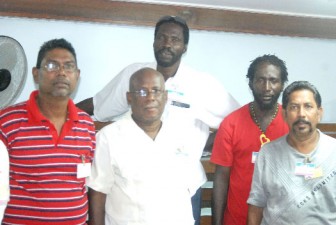President of the United Minibus Union (UMU) Ian Andrews says that the umbrella body has two objectives. First, it is working to repair the shoddy reputation of the sector which evokes images of public lawlessness; reckless drivers, uncouth and unkempt conductors and roughneck ‘touts’. He says these images have made it easy to demonize the service providers in what is an industry that serves a critical public purpose. Second, the UMU is seeking to secure public and official recognition for service providers in the sector as a collection of earnest and hard-working investors and employers who are simply seeking a fair return for their investments and efforts.
Both tasks, Andrews admits, are difficult ones. Over time, the minibus culture has attracted such a high level of public opprobrium that its only real constituency comprises that group of young commuters who have bought in to what it has to offer. The relationship between those who serve in the sector and the more mature commuters persists mostly out of necessity; they need each other. Andrews says the biggest challenge the industry faces in seeking to sanitize its reputation is that, due in large measure to its own delinquencies, it has been targeted by policemen for a generous measure of harassment.

On the business side, too, the industry faces its frustrations. Over the years it has fought several running battles with the authorities over spares’ costs and ever rising fuel prices and how these should relate to fare increases. Government’s position has remained that it must seek to protect commuters from exploitation. The privately-owned, public transportation service contends that its fares should bear a realistic relationship to the cost of providing a service. Government, it argues, is unfair, prejudiced and refuses to take account of the legitimate concerns of those who make a living from the industry.
Over time, minibus owners and operators have become embroiled in disputes with the authorities over fares. On occasion, the disputes have involved the highest authorities in theland including, President Bharrat Jagdeo himself. Anxious, it seems, not to accord the UMU state recognition, meetings with government have been confined primarily to bus owners and drivers. The union, however, is growing. Andrews says it has just over 1,000 members and how, in the circumstances, government can avoid engagement with the UMU for much longer is unclear.
To understand the business concerns of a sector that does not conform to any conventional pattern of commercial organization, you have to speak to the players in the industry directly. The backbone of the industry are the investors themselves, the owners who acquire buses at costs that often exceed $2 million sometimes, as a means of full-time employment and in other instances as a means of subsidizing their incomes. To understand the importance of the industry, however, you have to look beyond its relationship with its market. Minibuses provide employment for drivers, conductors and the army of touts that facilitate the loading of buses. Those apart, the industry is responsible for a significant share of purchases in the spare parts, tyre, fuels and lubricants industry. Minibuses also keep hundreds of mechanics across the country in work.
Owner/driver

Krishendat Sahadeo is a minibus owner/driver who plies Route 42 (Georgetown/Timehri). In 2000, he resigned his job as a personnel officer and bought a minibus. His savings at that time, he says, was in the vicinity of $500,000. “At that time we were making a reasonable return. The gas price was $235 per gallon. My take home pay at that time was $7,000 a day. When gas prices jumped to $500, the short-drop fare rose from $40 to $60 and the long-drop fare rose from $80 to $100. Even than we were making a reasonable return though my own take home pay fell to around $6,000 per day. Since the advent of VAT everything has changed. Tyre prices have increased from between $3,000 and $3,500 to $5,000. Brake pads have jumped from $2,500 to $5,000. A quart of oil which was between $500 and $600 is now $1,400. You can see where in some instances prices have gone up by more than 100 per cent.” Sahadeo says that on top of these increases the recent hike in gas prices to $980 per gallon has created a thoroughly unmanageable situation for service providers in the industry. He points out that he is a “family man” with three children, a wife and a mortgage. He says that if the government is offering a 10 per cent rebate on the price of fuel that rebate should be calculated based on the actual purchase price from its foreign suppliers and should not take account of VAT and excise taxes.
Conductor
Morris Smith is a conductor on Route 45 (Georgetown Hospital). He is a single parent with eight minors and “working the buses” is his “full time job”. His earnings, he says, may amount to around $3,500 per day “on a good day”. When the road is “bad” he has to settle for around $2,000. Smith understands that his own fortunes are linked to those of the drivers and owners. He tries to explain the frenzy that is sometimes associated with has become known as ‘the minibus culture.’ If he admits that much of it is both unwholesome and dangerous he insists that what it reflects is the desperate hustle to make ends meet.
Engagements between the service providers and the authorities have not settled the thorny issue of when fares should be raised and who should be responsible for fare increases. Andrews advocates a formula based on the movement of spares and gas prices and one which kicks in automatically. The union, he says, is seeking to prepare such a formula for presentation to government. However, Andrews is uncertain as to whether this initiative will move the process forward. Government, he says, is not interested in engaging the union. He believes that its aim is to exert sole control over minibus fare levels. He is opposed to that position. The minibus sector, he says, is part of the private sector.
Way forward
Andrews says that the current official position is that commuters should simply refuse to pay the most recent fare increases. He believes that this is an unwise, even a potentially confrontational situation. For the moment at least, the union appears to have settled for the tenuous position which allows conductors to demand the new fare but to accept the old rate in the face of strong resistance from commuters. These arrangements, he says, can often border on confrontation since the nature of the hustle is such that some conductors simply hold out for the new fare, insisting that the correct amount be handed over before the commuter boards the bus.
Lennox Willings, one of three bus owners with whom Stabroek Business spoke was one of a group of bus owners who met President Jagdeo some time ago. He too is not persuaded of government’s goodwill towards the industry. Willings believes that the key to resolving the impasse lies in government’s recognition of the legitimacy of the sector.
The union understands only too well, however, that in some respects, the service providers in the industry have been the authors of their own shoddy image. That is why it has set itself a number of objectives aimed at sanitizing that image. Andrews says that uniforms are contemplated for drivers and conductors while the stated objectives of the union include educating members in the rules of road safety, traffic laws and regulations; creating an improved relationship between the police and the sector; and providing legal assistance to members who are required to appear before the courts for traffic offences.
Beyond those functions, the UMU also seeks to provide medical insurance and hospitalization schemes for members, serve as an agent in the importation of motor vehicles and spare parts and provide advice to members with regard to the importation of suitable buses.
Andrews is under no illusions about the magnitude of the challenge facing the union. He believes, however, that the social role of the minibus sector coupled with its contribution to employment and to sustaining other sectors of the economy means that its bona fides must, sooner rather than later, be recognized.
The way forward, he says, lies in the sector seeking to change its public image and government recognizing the concerns of the service providers and working with bus owners, drivers and conductors, through their union, to address the issues. “It’s not all about chaos and confusion. These are earnest and hard-working men and women and the sooner we recognize that the better it will be for the sector,” Andrews says.




